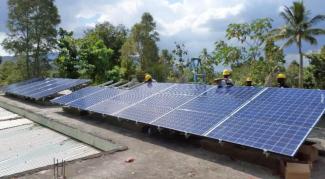Batteries and Battery Management
Batteries provide backup power during gaps in electricity generation. They are critical for some energy systems but are expensive and may require maintenance or replacement. Learn more

An official website of the United States government
Here's how you know
The .gov means it’s official.
Federal government websites often end in .gov or .mil. Before sharing sensitive information, make sure you’re on a federal government site.
The site is secure.
A lock () or https:// ensures that you are connecting to the official website and that any information you provide is encrypted and transmitted securely.
Energy audits assess current needs, but loads increase over time. Accounting for change is more cost effective during the initial system design.
Once a facility has analyzed the energy requirements of its day-to-day operations, it must also determine how the energy demands are likely to change over the life of the energy system. Health facility managers must think strategically, in consultation with stakeholders, about the possibility that energy demands may increase due to the addition of patients, extended operating hours, or new services.
Ultimately, all stakeholders will have to agree on a target energy load for the facility, which will feed into the system design process. The target load will directly impact the cost of the energy system. The addition of loads to a battery-based system is one of the most common causes of system failure. Once an energy system has been designed around a given set of agreed-upon loads, the loads cannot be increased without modification of the system (addition of batteries, solar panels, etc.).
Batteries provide backup power during gaps in electricity generation. They are critical for some energy systems but are expensive and may require maintenance or replacement. Learn more
This exclusive online version of the HOMER Powering Health Tool evaluates hybrid power systems to determine the most cost-effective options for delivering continuous electricity to health facilities. Use the tool
